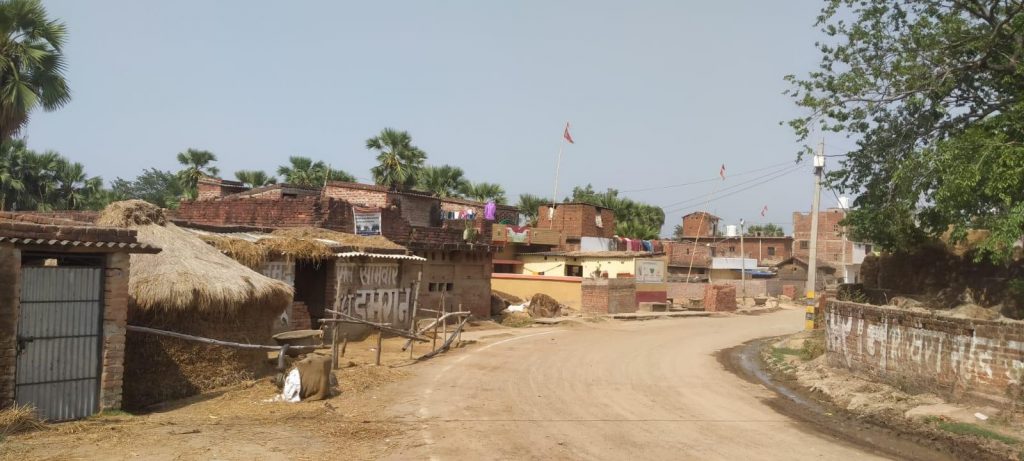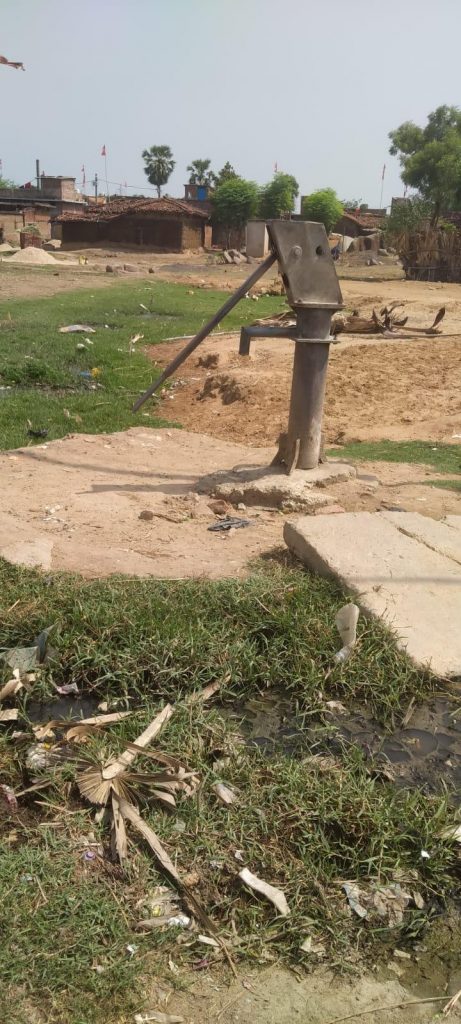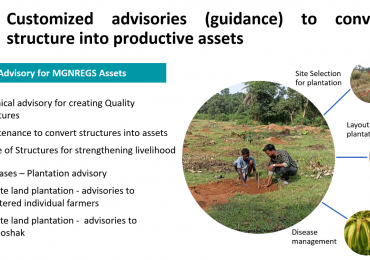Each year discussions around water crisis have become a norm. News around long ques for collecting water in urban and semi-urban areas, drying of water-bodies like ponds, falling levels of ground water emerge and are discussed at length, only to dissolve once rains approach. Ponds, rivers, lakes would fill up with water and people would breathe a sigh of relief for nine months of the year. But these memories resurface when summer approaches. With time, however, water is becoming the subject of discussion all year round with several studies and reports highlighting depleting sources, dip in ground-water level, drinking water stress, and establishing an association of these with the climate change.
“Moreover, two-thirds of India’s 718 districts are affected by extreme water depletion. One of the challenges is the fast rate of groundwater depletion in India, which is known as the world’s highest user of this source due to the proliferation of drilling over the past few decades. Groundwater from over 30 million access points supplies 85 per cent of drinking water in rural areas and 48 per cent of water requirements in urban areas.” (Source: JMP 2017)
Until few years back, states like Rajasthan, Maharashtra, Gujarat, and some of the southern states were already grappling with water problems, but now Bihar, Jharkhand, Madhya Pradesh, and Uttar Pradesh have also joined the states struggling with water crisis. Although rivers like the Ganges and Narmada flow through these states, the crisis is no less severe along their banks.
Around 286,000 villages in 11 states are located on the Ganga basin where water availability has been on a decline. This is concerning as agricultural land accounts to 65.57 per cent of the total basin area.
Recognizing this dire problem, Mobile Vaani, a community media platform powered by the social enterprise called Gram Vaani did a campaign, named, Kyonki Zindagi Zaroori Hai (Because Life Is Essential) where more than a thousand people have shared their opinions and the difficulties they face due to water-crisis. This article includes selected accounts and concerns shared by the communities, to provide an idea of the severity of the issue.

Forced to drink dirty water?
Manjeet Kumar from Agra village in Sono block of Jamui, Bihar says that a lot of people in his village has to pay regular visit to doctors owing to consumption of contaminated drinking water. He shared his concern, that even pregnant and lactating women drink unclean and polluted water putting theirs as well as the children’s health at risk. Kshamta Kumari from Khaira block spoke on similar lines when she shared that there haven’t been any tests conducted of the sources of drinking water in her village where drinking water mostly comes from the hand-pumps and borewell. In cases of diarrhoea the doctors simply instruct them to boil water before consuming. She also shared that the Primary Health Centre (PHC) is at a distance from her village and it is not easy for the villagers to visit the same. Kshamta Kumari further highlighted that there hasn’t been any orientation and guidance provided by the health workers toward consumption of clean drinking water.
Manjeet’s concern is echoed by hundreds where the citizens of the country are forced to drink dirty or contaminated water. During the campaign and even after it got over, a large number of people from rural areas of Bihar and Jharkhand have complained on the Mobile Vaani platforms about contamination of drinking water. A report by the Inner Voice Foundation reveals that there are many villages in the Indo-Gangetic plains, termed as “widow villages”, where numbers of men have died from drinking arsenic-laden water. The arsenic level in the wells of villages along the banks of the Ganges is so high that it exceeds the standard pollution level. Arsenic naturally occurs in the groundwater supply of the Ganges basin. Additionally, industrial pollution and mining also contribute to it.
It is estimated that in India alone, around 5 crore people are affected. Among them, the most affected are in Bengal, Bihar, and Jharkhand. In villages along the banks of the Ganges, millions of people are struggling with skin wounds, kidney, liver, and heart diseases, neurological disorders, stress, and cancer. These people have been drinking water from hand pumps and through pipes for a long time, which contains a considerable amount of arsenic. According to the National Health Profile of India 2019 (NHP), there is a high level of arsenic in the water of 17 districts of Uttar Pradesh and 11 districts of Bihar. In Ballia, Uttar Pradesh, Bhojpur and Buxar in Bihar, and Murshidabad in West Bengal, arsenic levels have reached 3,000 parts per billion (ppb), which is more than 300 times the WHO’s defined safe limit of 10 ppb. According to the WHO, continuous exposure to arsenic leads to skin-related issues. Apart from affecting neurological and reproductive processes, it also causes heart-related problems, diabetes, respiratory and gastrointestinal diseases, and cancer. In the article published in Scroll several interviews highlighted incidences of arsenic poisoning – “Kameshwar Mahato, 63, a resident of Chapar village of Moinuddinagar block in Samastipur district of Bihar, is affected by arsenic poisoning. He has developed blood pressure issues, which cause him to tremble.”
Munna Mahera from Madhubani expressed through Mobile Vaani, that all the wells and ponds in the villages have been unusable. The water drawn from hand pumps are contaminated; tests by the health departments confirm that the water contains arsenic. Not only children are falling ill after drinking that water, the elderly too are suffering from stomach pain and other diseases. When they go to the primary health centre to seek treatment, more often than not, doctors are not present there. According to him, the villagers are struggling for a solution of this situation and bring back normalcy in their lives.

mpact on Women and Children
In an article dated 2020, ‘The Cancer Institute in Patna and Mahavir Cancer Institute found that in Chhapra village, out of 44 hand pumps in 100 households, the level of arsenic was higher than the WHO permissible limit.’
The same report highlights, that according to doctors, due to exposure to high arsenic concentration during pregnancy, risks of miscarriage, stillbirth, preterm birth, low birth weight, and neonatal mortality, get heightened by six times. In 2017, a report titled ‘Groundwater Arsenic Contamination and its Health Effects in India’ was published, but it didn’t receive much attention. One case mentioned in the report was of a woman from Nadia district of West Bengal, whose first pregnancy ended in preterm birth. She had a miscarriage the second time, and the third time, she had to face neonatal death due to arsenic-contaminated water. The arsenic concentration in her drinking water was 1,617 ppb, and in her urine, it was 1,474 ppb.
The Public Health Engineering Department in Bihar is working to provide clean drinking water to residents of affected areas like Bhojpur and Buxar. Under the Namami Gange and Rural Water Supply Department, a water supply project has been started in Uttar Pradesh. Under these schemes, household tap connections are being distributed, but the challenge is that groundwater is contaminated with arsenic. Even if water is supplied through taps, it will be considered contaminated. The aim of the Jal Jeevan Mission is to provide tap water to every rural family by 2024. However, when we look at the figures, we found that penetration of the Jal Jeevan Mission in rural Uttar Pradesh and West Bengal is abysmally low
About 10 kilometres from the district headquarters in Jamui district is a village called Manjhwe. A government tap is installed at the end of year in this village, from where all the villagers fetch water. The wells in the village have dried up. Now, water is available at the depth of more than 700 ft, which the residents of the Dalit neighbourhood cannot afford. Due to water scarcity in summers, many women go to their maternal homes. Many young men in the village are unable to get married because if a woman gets married, she has to go far from the village to fetch water. Although a water tank has been installed in this village, there is no water supply.
Nazma Bee from Khajuri Khas in Delhi says that the water is being supplied in the area through tanker. She shares that several people complain of stomach ache and upset after consuming the water, which may have been caused by unclean pipes, contaminated water, etc, and urges the authority to look into the matter.
It is important to mention here that there are several low-income colonies like Khajuri Khas where water for drinking and for other essential activities is supplied through tank. Unclean water, supply pipes and tanks can hence affect a large number of individuals residing here.
What about the agriculture or cultivable land?
On one side of the challenges, ate those who do not have much choice and access to resources to avoid drinking and consuming contaminated water, while on the other are those who are plagued with issues related to drought and water shortage. Where there is contaminated water, people fall sick, and where there is no water, the fields are dry. As a result, farmers are losing interest in farming.
In India, more than three-quarters of rural women depend on land for employment, while this figure is close to 60% for men. This is because the fields are drying up due to lack of timely rain. Crops are ruined waiting for water. Overall, farming is not as profitable as it used to be, leading men to migrate to cities for jobs.
In such a scenario, women farmers become responsible for taking care of the field and water the crops, despite the fact that the true ownership of land lies with mostly men (around 87% agricultural land are owned by men against 13% of land owned by women farmers). This add to the woes of the women of such families, who are already burdened with activities like fetching water, arranging and preparing food, taking care of livestock, and other family chores. Rakesh, Mundawra village in Rajasthan, speaks to one of the Mobile Vaani volunteers, Ajay Kumar and shares that their fields have dried up and there is hardly any water left for farming. He further shares that women have to travel as far as 5 to 7 Kms for fetching water, and supply of water from the Govt. is also inadequate to take care of their needs. During grass-root consultations conducted in Jamui’s Gidhaur block’s Ratanpur panchayat, participating villagers shared that there used to be three crops in a year, but now it is difficult to have even one crop, and even that incurs losses. Although most farmers have installed borewells in their fields, the water extracted is not enough to irrigate entire fields, leading many to abandon the activity and migrate out. In such scenarios, the women who stays back faces difficulties and additional burden of taking care of livestock and watering the fields.
Those men who migrate to cities for earning a livelihood are mostly working as labourers there. But water crisis is also present in the cities. For example, many labourers who have migrated to Delhi in search of livelihood, are staying in camps like that of Navjeevan camp in Govindpuri. Rohit, from the camp reports that although Delhi government has promised free water supply to the residents, money is being extracted by the service-men to release water, who demands 100 rupees per person to release water. Those who cannot or do not provide the money are left to drink polluted water or stay thirsty. In a conversation with Mobile Vaani community reporter, Nand Kishore, Babloo Kumar from Anand Vihar shared that because of supply of polluted water, several residents have to spend at least 700/800 rupees a month to get clean water. Workers coming to the city need water for drinking and daily chores, including bathing, washing, and sanitary needs. In rented accommodations, landlords install meters for water, and these worker families end up spending on water-bills too, in summer which can go up to 500/700 rupees. Many a time, several families need to spend separately for clean drinking water.
The water crisis in India is deepening day by day. In a study conducted by NITI Aayog in 2018, India ranked 120th out of 122 countries in the list of water crisis. This situation could be even more alarming. Maybe it has already become!





